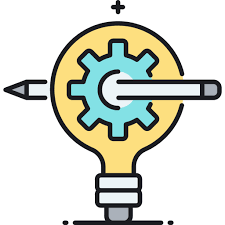The book starts out with an introduction to microeconomics, then goes into examples of micro situations from all over the world. There is also a short case study of one student who dealt with money while going through tough financial times. After reading this brief case study, students will know what to expect when they choose to get a micro economics degree. Then they learn about some common examples in microeconomics.
A good way to begin thinking about micro issues in terms of your college course requirements is to consider what you will need for a successful exam. This book includes some sample tests that students can take to see what type of situation they will be up against. This gives students an idea of what types of questions will be on their test. Then they see what types of answers they should give, as well as what types of behaviors students should exhibit in order to score high on these tests.
Micro economic concepts are discussed in the text. There are an introduction to the topic as well as a list of micro activities. There are several exercises related to micro-economic theory. Then there is a short glossary of terms used in micro-economic situations. Finally, there is an index of the different concepts used throughout the book.
Although the book does not cover every topic that would apply to a micro level, it covers enough of these topics that most college students will find at least some information useful. The book contains five lessons that are related to college. These are grouped into three parts. The first introduces the student to the concept of microeconomics and the different areas of study that address micro aspects of life.
The second part covers topics related to micro analysis of market forces. In this section students are introduced to several techniques for making economic comparisons between different variables. The third part uses the concept of demand and supply to analyze the relationships among various economic quantities. The fourth explains the nature of business cycles and the significance of macroeconomic data for decision making.
The fifth and final chapter explains some of the difficulties encountered by students who attempt to make sense of micro changes and trends. The last chapter provides a simple method for applying a macroeconomic model to a specific micro situation. The other subjects offered in this economics degree book include a review of the concepts of micro and macroeconomics. Other helpful topics include planning for the future, risk management, motivation, and teamwork.
A good economics degree program should also provide elective courses that allow students to specialize. For example, courses could include “Macro Business Strategy” and” Macro Business Management.” Such specialized courses give students a unique opportunity to learn about micro and macro economics in the context of a larger and more complex environment. Further learning could lead to specialization in a specific area of micro or macro economics.
It is not uncommon for college students to want to get a job in the field of microeconomics once they have graduated. In fact, many employers consider this a core category of knowledge. Jobs in the financial services and banking industries are especially in demand. As the world recovers from the recent recession, companies are competing for more micro applicants than ever. For this reason, many schools now offer micro internship programs. These programs provide students with an excellent platform to experience the micro and macro economy firsthand.
For those students interested in working in the public sector, there are also opportunities to explore these markets. Health care is one area of employment that is particularly affected by economic cycles. Students can receive training and experience in the world of health care by participating in internship programs in hospitals, clinics, and other institutions of higher education. There is a vast and exciting world of public finance and economics out there for students to explore.
As a result of increased globalization and technological advancements, there is a growing need for educated professionals who can understand technology and how it affects the macro economy. This is especially true for the IT industry, which has grown at an astounding rate in recent years. For individuals who wish to begin a career in computer science or math, there are numerous opportunities for training in these fields through colleges and universities. Microeconomics offers countless opportunities for students to learn about the workings of the economy on a small scale.
